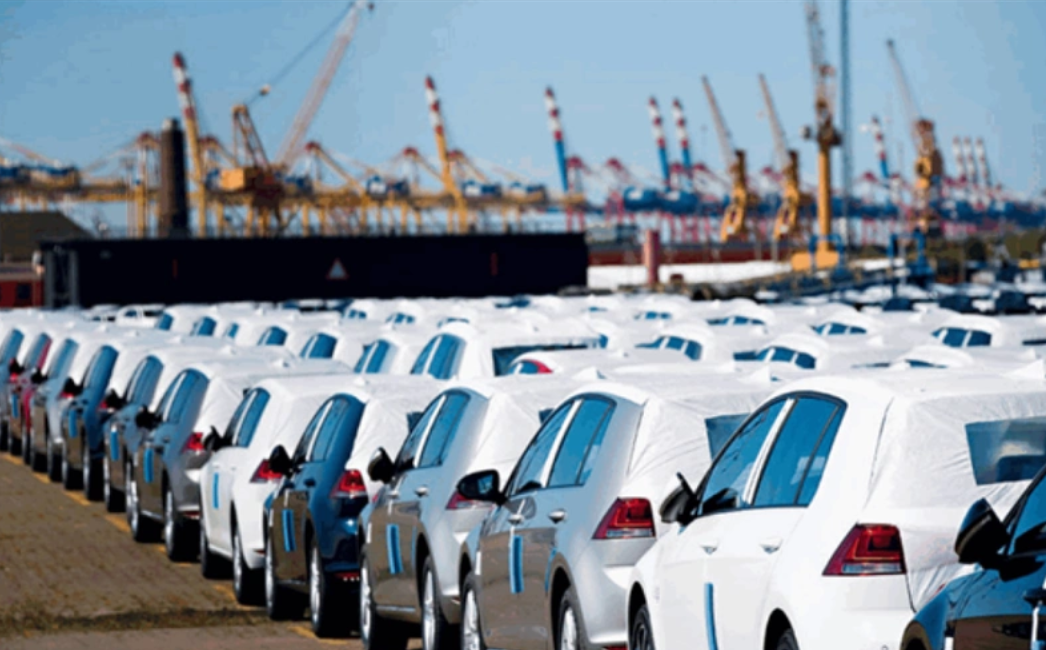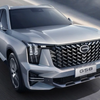5 Tips for Importing Chinese Cars to the Middle East!

5 Tips for Importing Chinese Cars to the Middle East
The global automotive landscape is changing, and Chinese car brands are leading this charge. For buyers in the Middle East, especially in countries like the United Arab Emirates (UAE), Saudi Arabia, and Qatar, importing a Chinese car directly can be a smart way to get a feature-packed, modern vehicle at an excellent price. However, the process can seem complex if you are doing it for the first time.
This guide will walk you through five essential tips to make your import journey smooth, profitable, and stress-free.
We will cover choosing the right car, understanding UAE regulations, navigating the import process, and handling logistics at key ports like Jebel Ali.

Tip 1: Choose the Right Chinese Car for Middle Eastern Conditions
Not all cars are created equal, and the harsh climate and driving styles of the Middle East demand specific features. Chinese manufacturers offer a wide range, from economical sedans to luxury SUVs, but your choice must be strategic.
A. Research Brands with a Strong Regional Presence:
Some Chinese brands have already invested heavily in the GCC (Gulf Cooperation Council) market. This is a huge advantage for you.
Geely: Models like the Geely Coolray and Tugella are popular for their stylish design and strong performance. They are tuned for GCC specifications.
Chery: A long-standing player in the region, known for models like the Tiggo 7 Pro and Tiggo 8 Pro which offer great space and value.
Changan: Their CS35 Plus and CS75 Plus are robust SUVs built to handle tough conditions.
MG (owned by SAIC): While a British brand, it's now Chinese-owned and has a massive presence in the UAE, meaning parts and service are readily available.
BAIC: Known for more rugged SUVs like the BJ40, which is a good choice for off-road enthusiasts.
Why does this matter? Choosing a brand with a local presence means easier access to spare parts, better resale value, and service centers that are familiar with the vehicle.
B. Prioritize GCC Specifications:
This is the most critical factor in your selection. A car made for the European or Chinese market will not survive long in the Gulf heat. You must insist on GCC Specifications. What does this include?
Enhanced Cooling System: A larger radiator and more powerful fans to prevent the engine from overheating in 50°C+ temperatures.
Heat-Resistant Materials: The interior plastics, upholstery, and electrical wiring are designed to withstand intense sun and heat without cracking or failing.
Large-Capacity Battery: The air conditioner runs almost constantly, placing a heavy load on the battery. GCC-spec cars have heavy-duty batteries.
Stronger Air Conditioning: The AC system is significantly more powerful than in standard models.
Different Engine Tuning: Engines are often tuned for the lower-octane fuel sometimes available in remote areas.
Always ask the supplier or manufacturer for a certificate or clear confirmation that the vehicle is built to GCC specifications.
C. Consider Your Needs:
City Driving: A compact SUV like the Geely Coolray or Changan CS35 Plus is perfect for maneuverability and fuel efficiency.
Family Travel: A larger 7-seater SUV like the Chery Tiggo 8 Pro or Haval H6 is ideal.
Luxury and Status: Brands like Hongqi or higher-end models from Zeekr and Li Auto are entering the market, offering premium features at a fraction of the European cost.
Off-Roading: Look towards BAIC or the tank-like models from brands like Great Wall Motors (GWM).
Spending time on this first step is an investment that will save you from major headaches and expenses down the road.

Tip 2: Master the UAE Import Regulations Before You Buy
You cannot just ship a car to the UAE and start driving. The government has strict regulations to ensure all vehicles on the road are safe and legal. Understanding these rules beforehand is non-negotiable.
A. Age Restrictions:
The UAE has a famous rule regarding the age of imported vehicles. Generally, a car must be less than 5 years old from its date of manufacture to be imported.
There can be exceptions for classic or rare cars, but for a standard import, stick to newer models. Always check the manufacturing date on the vehicle's door jamb or in its documents.
B. Required Documents:
You will need a complete set of documents. Start collecting them early.
Original Bill of Lading: This is the receipt of shipment from the shipping company. You need this to take possession of the car at the port.
Commercial Invoice: From the seller in China, detailing the car's price.
Certificate of Origin: Proving the car was manufactured in China.
Vehicle Title and Registration Documents (Export Certificate): From the Chinese authorities, proving the car is legally cleared for export.
Insurance Certificate: You must have at least third-party liability insurance valid in the UAE before you can register the car.
Your Passport and UAE Residence Visa: For personal import, you must be a UAE resident.
C. Homologation and Type Approval:
This is the process where the UAE authorities check that your car meets all local safety and environmental standards. For popular Chinese brands with GCC specs, this process is usually straightforward.
However, for a new or uncommon model, you may need to provide additional technical documents from the manufacturer.
It's advisable to hire a clearing agent who understands the homologation process with the Emirates Authority for Standardization and Metrology (ESMA).

Tip 3: Understand the Step-by-Step Import Process
Breaking down the process into clear steps makes it manageable.
Step 1: Source and Purchase
Find a reliable supplier in China. You can use major online platforms like Alibaba or work directly with authorized dealers.
Always request a video call to inspect the car virtually. Agree on terms like FOB (Free on Board) or CIF (Cost, Insurance, and Freight), which define who pays for shipping and insurance.
Step 2: Shipping and Logistics
You will need to hire a freight forwarder. They handle the entire shipping process.
The car will be shipped in a container (if it's a high-value vehicle) or more commonly, via Roll-on/Roll-off (RORO) shipping, where cars are driven onto a specialized car carrier ship. This is cost-effective for single vehicles.
Step 3: Customs Clearance at the UAE Port
Once the ship arrives, your work (or your agent's work) begins.
Submit Documents: Present all the required documents to the UAE customs authorities.
Pay Customs Duty: The UAE charges a 5% customs duty on the CIF value (Cost of the car + Insurance + Freight) of the vehicle. There may also be a small port service fee.
Customs Inspection: A customs officer will do a quick visual inspection to verify the vehicle details against your documents.
Step 4: Vehicle Testing and Registration
After clearing customs, you can take the car to an official vehicle testing center (like in Tasjeel or Shamil). The car will undergo a thorough inspection of its chassis, engine, and overall roadworthiness. Once it passes, you will receive a passing certificate.
Take this certificate, along with all your documents, proof of insurance, and proof of customs duty payment, to the relevant traffic department to get your UAE license plates.

Tip 4: Navigate Jebel Ali and Other Ports Like a Pro
Jebel Ali Port in Dubai is one of the largest and busiest ports in the world. It is the most likely destination for your imported car. Knowing what to expect is key.
A. The Role of Your Clearing Agent:
Do not try to handle Jebel Ali clearance alone, especially as a first-time importer. Hire a licensed clearing agent. They are experts in the port's procedures. Their job is to:
Submit all documents to the right departments.
Pay the customs duty on your behalf (you will reimburse them).
Navigate the port's vast layout to locate and retrieve your vehicle.
Handle any unexpected issues or delays.
The fee for their service is well worth the time and stress it saves.
B. Potential Delays and How to Avoid Them:
Incorrect Paperwork: This is the number one cause of delay. A single misspelling or missing stamp can hold up your car for days. Your agent will check this.
Random Inspections: Customs may select your shipment for a more detailed inspection. This is normal but can take extra time. Factor this into your schedule.
Port Congestion: Jebel Ali is extremely busy. Unloading and processing can sometimes be slow. Your agent can give you realistic timelines.
C. Other Port Options:
While Jebel Ali is the primary port for Dubai, your car could also arrive at:
Port Rashid, Dubai: Smaller, but still handles vehicle imports.
Khalifa Port, Abu Dhabi: A major, modern port serving the capital.
Port of Sharjah: Another option for the Northern Emirates.
The clearance process is similar at all UAE ports, but your clearing agent should be familiar with the specific port of entry.

Tip 5: Plan for the Total Cost of Ownership
The price of the car is just the beginning. To understand the real cost, you must budget for all associated expenses.
1. The Import Costs:
Cost of the Vehicle (FOB price).
Sea Freight Cost.
Marine Insurance (usually 1.2-1.5% of the car's value).
Customs Duty (5% of CIF value).
Clearing Agent Fees (can range from AED 1,500 to AED 3,000).
Port Handling Fees.
2. The On-Road Costs:
Vehicle Testing Fees.
Vehicle Registration and License Plate Fees.
First-Year Insurance Premium.
3. The Long-Term Costs:
Spare Parts: Even for common brands, it's wise to research parts availability. Consider importing common wear-and-tear parts (like filters, brake pads) with the car to save money later.
Service and Maintenance: Find a reputable garage that specializes in or is familiar with Chinese cars. While dealer networks are growing, you may not have an official service center for your specific model.
Warranty: Check if the manufacturer's international warranty is valid in the UAE. If not, you are importing the car "as-is," so a thorough pre-shipment inspection is vital.

Conclusion
Importing a Chinese car to the Middle East can be a highly rewarding venture, giving you access to advanced technology and luxury features at a competitive price.
By carefully selecting a GCC-spec model, understanding UAE regulations, following the import process step-by-step, using a good clearing agent at Jebel Ali, and budgeting for all costs, you turn a complex process into a simple, successful purchase.
Do your homework, be patient, and soon you could be driving your new, high-value Chinese car on the roads of the UAE.
If you are interested in the content of the article, please do not hesitate to contact us for more vehicle related information:YL Automobile

2025 Li Auto L7 price and review!





